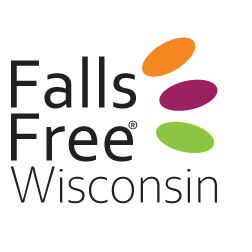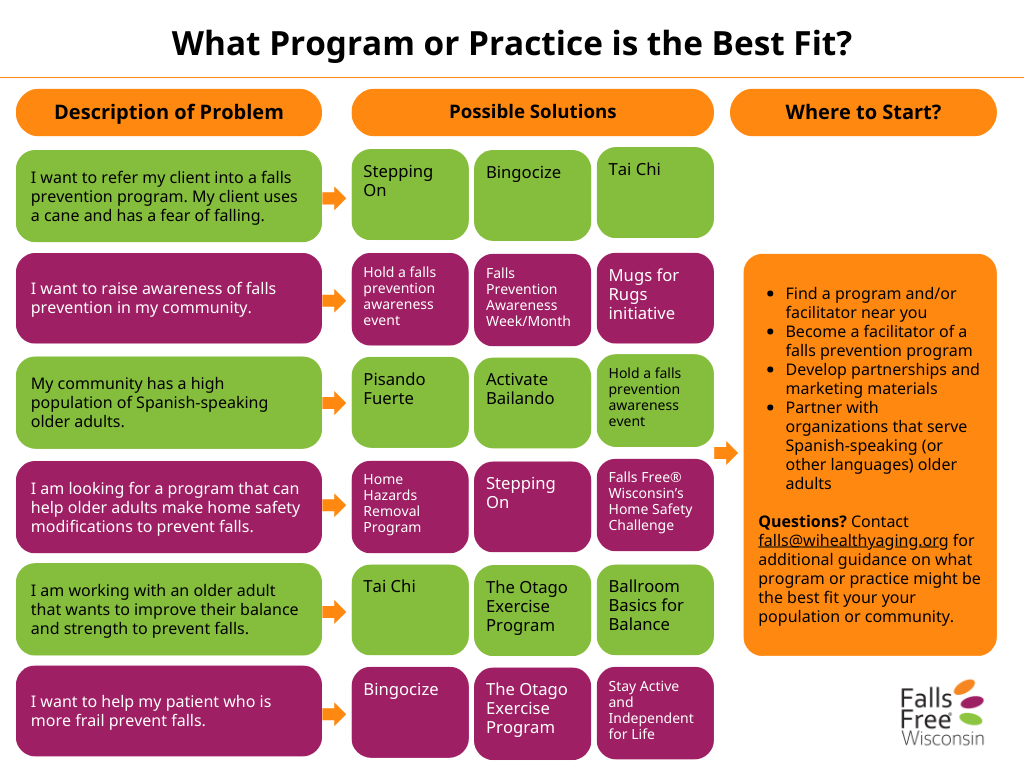Section 3: Starting/Launching Coalition (Maintenance Phase)
Developing Foundational Documents and Strategic Plan
It is important to have a well-defined mission, vision, and key strategies based upon the needs and themes identified from community conversations. These will serve as the foundation for further development of key objectives and actions. It is suggested that a core group or steering committee develop these documents and then share with the large coalition for feedback, discussion, and modification as needed. If you have an existing coalition with a larger focus on healthy aging and wellness, consider how your mission and vision could incorporate the work around fall prevention and if any modifications are needed. If sufficient, you may focus further on developing key objectives and action teams in the next section.
Mission: The Milwaukee County Falls Prevention Coalition will address the adult community’s risk of falling by providing access to comprehensive programs and targeted interventions. The coalition will create links between community programs and services to enhance collaborative efforts.
Vision: Milwaukee County will be a national leader in the prevention of falls in the adult population through community education, collaboration, and innovation.
Key Strategies
- Create access to fall screening and fall prevention interventions in all communities in Milwaukee County.
- Create broad awareness of fall prevention within the community through branding, community education & communication plan.
- Capture data to monitor success of fall prevention initiatives and leverage technology to identify patterns and prevent falls within the community.
- Educate providers on evidence-based screening & interventions & provide access to resources to support the community.
Mission: To educate people throughout our communities that falls are the leading cause of serious injuries but are preventable.
Vision: Achieve a Fall Free Community where people are consciously making choices to positively impact their health and well-being.
When recruiting members, it is important to be as inclusive as possible and to use the networking capacity of the core group. Engage those with diverse skills sets, knowledge, and backgrounds to gain unique perspectives. Whenever possible, leverage personal connections to contact and engage individuals for the coalition. In addition to specifying key individuals, identify key organizations and ask the leadership of the organization to select a representative for the coalition. Individuals often change positions or move to other organizations, so it is important to institutionalize and embed membership on the coalition within an organization, not just with one person. To embed coalition membership within an organization, the coalition’s mission and goals must be compatible with those of the organization. It is recommended to create a document that outlines expectations of participants which include but are not limited to regular meeting attendance and promotion of coalition within their population.
Suggested key organizations for county coalitions
The first coalition meeting is extremely important to get attendees excited about helping older adults age independently with improved balance, strength, and mobility and make them feel they are part of a vital and timely movement. The core group/steering should plan the first meeting and depending on the direction taken after the coalition is established, the membership of the steering team may change/further develop.
Consider the coalition members who will be participating when selecting a format. While in-person meetings can increase engagement, networking, and collaboration, they can be a challenge for busy professionals. You may consider offering meetings virtually or a hybrid of in-person and virtual meetings. If selecting a virtual platform, consider the following:
Once the meeting format is determined, set a schedule of regular meetings well in advance to allow members to plan and commit. Consider use of a Doodle poll after the kickoff meeting to confirm membership and find a time that works best for the majority. Send agenda and reminders in advance of each meeting to further engage members and encourage attendance and participation.
Coalition Communication
Engaging members of the coalition should occur beyond regularly scheduled meetings. Some suggestions to do this include the following:
Sometimes the hardest part of moving a coalition forward is defining exactly what needs to be done, prioritizing those action items, and deciding who will do the work. It is important to have strategies and action plans to accompany the coalition’s mission and goals. Good planning increases the coalition’s chances for success. The creation of action teams can be effective in leveraging the unique skill sets of coalition members and increase engagement. Each action team should have specific goals and key objectives that align with the coalition mission and strategies. These action teams may be ongoing or designed to accomplish a specific task.
Example from Milwaukee County
Action Team: Communication Plan- Goal: Increase fall risk awareness by leveraging knowledge and expertise of coalition members and achieve at least 5000 community interactions by the end of the year.
Action Team: Data Dashboard- Goal: Identify key metrics to monitor fall rates/injuries as well as the impact of fall prevention interventions.
Action Team: Provide Education- Goal: Train the workforce on a standardized fall prevention approach and educate at least 500 providers by the end of the year.
Example from Brown County
Goal Area: Data – Increase EMS referrals to ADRC by 30%. Collect data from Brown County Fire/EMS (specifically lift assist and non-transport calls).
Goal Area: Education – Plan and deliver collaborative community falls prevention event (with booths and balance screening). Prepare standard educational PowerPoint presentation (about the Brown County Falls Prevention Partnership, local falls issues and efforts) to be used by each member to educate at least one influential unit/department within their organization (providers, pharmacy, hospitals, assisted living, skilled nursing, other). Minimum of 4-5 outreach events, with a focus on expanding to rural communities.


